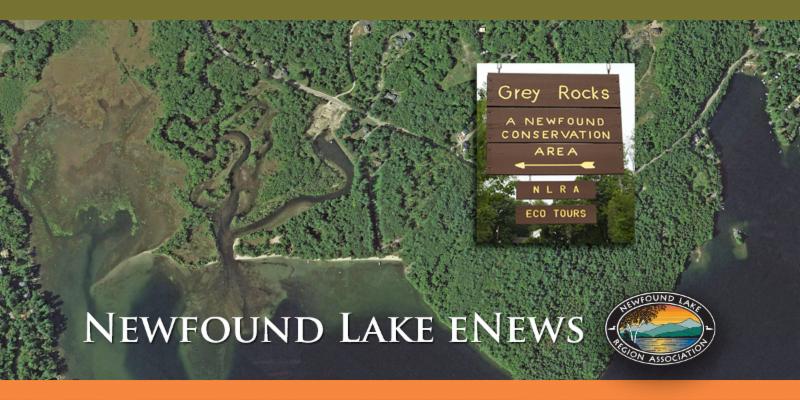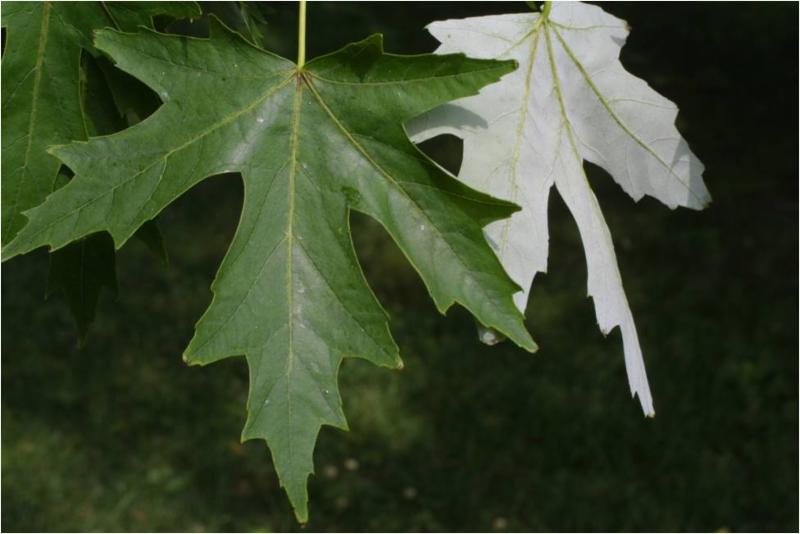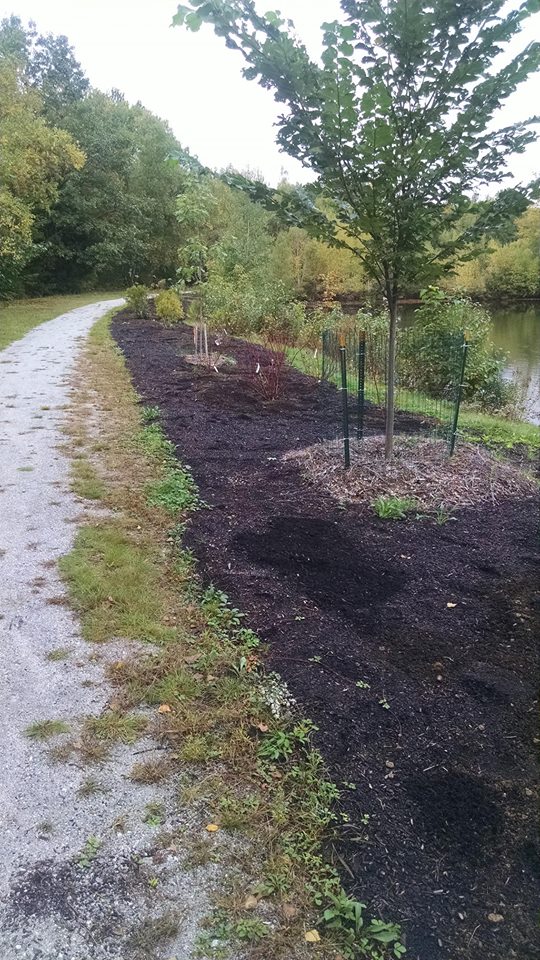
The Story of Grey Rocks, Part 3: Trees of Grey Rocks
By Andrew Veilleux, Program Manager
NLRA’s Grey Rocks Conservation Area holds different meanings for different people. The property has been used by Native Americans as a fishing camp, young women attending Camp Grey Rock and most recently by boaters as the Newfound Marina. At its peak, the Newfound Marina operated 6 buildings and dozens of boat slips, with heavy use of roads, walkways, and the surrounding water. Before the property was donated to NLRA in late 2011, structures were demolished and most of the evidence of decades of commercial use was removed.
The NLRA is keenly aware of the many unique conservation values of Grey Rocks’ 30-acres, and the importance of any decisions made about its future restoration and use. This eNews is the third in a six-part series that will tell the story of how Grey Rocks has become an example of practical and sustainable land-use practices. Each email will highlight an aspect of Grey Rocks’ restoration, and introduce you to how the NLRA is restoring the site.
Trees of Grey Rocks
In order to properly describe the trees of Grey Rocks, we need to split the land up into two different categories. First there is the upland, which is the land that stays dry for most or all of the year. In the case of Grey Rocks, a majority of upland is a result of either fill brought on site or dredged from the channel. Next there is the floodplain, or lowland, which stays damp most of the year and occasionally floods. In most cases, this transition can take place over a distance of a few feet, mostly due to a small change in ground elevation. With the river and lake so close, groundwater can often be found within 6 feet of the ground surface. Plants on Grey Rocks must be tolerant of wet conditions and occasional flooding in order to thrive.
 Sugar Maples and Silver Maples can be told apart by their leaves, making it difficult to differentiate in the winter. Silver Maple leaves have much deeper V’s in their leaves, as seen in the picture.
Sugar Maples and Silver Maples can be told apart by their leaves, making it difficult to differentiate in the winter. Silver Maple leaves have much deeper V’s in their leaves, as seen in the picture.
In addition to the floodplain and delta environment, almost 4 acres of Grey Rocks was raised with fill material for the commercial use of the marina. This created additional upland zones, though vegetation was stifled by the heavy traffic, compaction and primarily sandy soils. Never the less, nature loves disturbance. White Birch are often the first to return to disturbed soils, and can even be found against concrete foundations at Grey Rocks. The birch grove on the southern shore has had the most time to develop after the area was cleared in the early 1990s. The picture below shows the building on the point next to a hiker’s view of the area today.

 Trees chosen for 2018 site restoration were selected with the surrounding species in mind. For example, we felt this site was a good choice for the reintroduction of American Elms due to the presence of an existing elm. Unfortunately, this elm doesn’t hold the same resistance to Dutch Elm Disease as the cultivars that were recently planted (thanks to Doug McLane for providing these blight-resistant Princeton American Elms).
Trees chosen for 2018 site restoration were selected with the surrounding species in mind. For example, we felt this site was a good choice for the reintroduction of American Elms due to the presence of an existing elm. Unfortunately, this elm doesn’t hold the same resistance to Dutch Elm Disease as the cultivars that were recently planted (thanks to Doug McLane for providing these blight-resistant Princeton American Elms).
Pay close attention to how far upland other trees are planted and you will get a sense of how tolerant they are of “wet feet”, and how small changes in ground elevation effect species success.
Plant of the Month (White Pine- Pinus strobus)
 One variety of a Christmas tree, the Eastern White Pine, is a conifer symbol of wintertime for many, including Charlie Brown! These trees have also been used for medicines and, of course, lumber. Almost all pines in New Hampshire are relatively young, with life spans of over 400 years. The largest White Pine in the state holds the record with a circumference of 23’ 4” in Cheshire, NH. They have been high-value timber since early European settlement, known as “king pines” or “mast pines” designated for British Royal Navy ship masts. This was followed by extensive unregulated logging and, especially in the Newfound Watershed, clearing for agriculture and grazing through the late 1800s.
One variety of a Christmas tree, the Eastern White Pine, is a conifer symbol of wintertime for many, including Charlie Brown! These trees have also been used for medicines and, of course, lumber. Almost all pines in New Hampshire are relatively young, with life spans of over 400 years. The largest White Pine in the state holds the record with a circumference of 23’ 4” in Cheshire, NH. They have been high-value timber since early European settlement, known as “king pines” or “mast pines” designated for British Royal Navy ship masts. This was followed by extensive unregulated logging and, especially in the Newfound Watershed, clearing for agriculture and grazing through the late 1800s.
Grey Rocks Sponsorship
Become a part of Grey Rocks by sponsoring a bench, picnic table, or tree. Sponsors make a visible and lasting contribution to our mission to protect the Newfound watershed, and receive recognition for their contribution though engraved plaques with text of your choosing. Please contact the NLRA for more information and prices at info@newfoundlake.org.
Want to learn more about Grey Rocks? Click here or follow us on Facebook!
